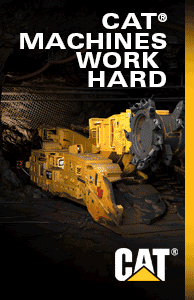Coal Minings’ Deep History in Southern Illinois
Louis Joliet and Pere Marquette, returning from an expedition on the Mississippi River in 1673, were the first explorers to notice the combustible material that would shape the Illinois economy. The coal just sat there on the surface like low-hanging fruit near Utica along the Illinois River.
The first mine appeared near Peoria not long after, but it wasn’t until 1830, when coal from Belleville found a market in nearby St. Louis, that the industry took off, according to Keith Weil and Alvin K. Grandys, who wrote the 1976 Illinois Coal Digest, a publication from the Illinois Department of Business and Economic Development.
Coal grew by leaps and bounds over the decades. In the 1850s and 1860s, railroads opened lines to new customers and the Civil War. Later, Weil and Grandys write, the formalization of geology and the appearance of the steam engine made coal easier to find and dig.
The mines attracted tens of thousands of workers, many of whom were exposed to the dangers of an unchecked industry. As mine collapses and explosions claimed hundreds of lives, new vitality sprang into labor unions that went on to fight for better safety and health care.
Early mine collapses, the result of apathetic owners, encouraged miners to organize but still produced few gains, according to Rosemary Feurer, a history professor at Northern Illinois University. Reforms went unenforced, and even a nascent form of workers’ compensation, the victory of a particularly deadly episode in Cherry, in the northern part of the state in 1909, barely compensated widows from a legal judgment.
Every law “was written in blood,” said Bernie Harsey, president of the United Mine Workers of America Local 1825 in DuQuoin.
Harsey also fought for a better way of life for miners. In 1993, management wanted to reduce health care benefits, so the union went on strike, and Harsey was out of work for six months. If the strike didn’t happen, he said, he didn’t think he would have health insurance coverage.
Harsey, who started in the coal industry in 1973, said he’s used between $2 million and $3 million in health insurance to cover his family for everything from cancer to a kidney transplant.
“We wouldn’t have that without our labor disputes,” he said.
Health care was one of the items that miners fought hardest for, and in 1946, John Lewis, the leader of the United Mine Workers of America, negotiated legislation that secured cradle-to-grave health care coverage for its members that was guaranteed by the federal government.
Recently, that compromise came under threat when Peabody Energy filed for bankruptcy in 2016, the latest in a series of coal companies to fail. After a temporary stopgap that saved health insurance for 22,600 retired miners, their widows and children, Congress finally saved the deal in April 2017.
Today, the “Promise of 1946,” a term the Krug-Lewis Act acquired relatively recently, seems sacrosanct, but miners at the time wouldn’t have seen it that way, Feurer said. Throughout Lewis’ tenure, the UMWA grew closer to management, and the organization became more bureaucratic. Inspired by these trends, a more rebellious wave of labor action in the 1960s won the Federal Mining Safety Legislation of 1974, an improvement to narrower and weaker bills passed in 1951 and 1969.
For as much as miners sacrificed for their benefits, others who weren’t covered sometimes sacrificed just as much, as companies pit workers against themselves by bringing in different ethnic groups to undercut wages of more established groups. The 1922 Herrin Massacre stands out as the one of the most violent episodes of labor violence in which union members shot and killed 19 strikebreakers.
The first people to mine in Illinois were slaves, Feurer said. Other early groups to settle the area were English, Scots-Irish and Irish, people who’d struck out with the poor soils of Appalachia, according to David Conrad, a history professor at Southern Illinois University Carbondale. From 1890 to the early 1920s, eastern and southern Europeans settled the area next. After the Civil War, African-Americans came north only to find that “southern Illinois was not greatly different,” Conrad wrote in “Tell Me A Story: Memories of Early Life Around the Coal Fields of Illinois.”
As evidence of coal’s importance to the economy and culture of Southern Illinois in particular, the first mining union, the American Miners’ Association, began in West Belleville in 1861.
Since then, Illinois has produced many generations of miners, and today, as a lack of opportunities clamps down on the region, it ensures that only an eager, if smaller, generation will continue the dangerous work.
Only, they won’t belong to the UMWA anymore, Harsey said. Not a single member works in any mine in southern Illinois.
About 98 percent of workers who belong to Local 1825 are retired now. The other 2 percent, about 10 people, are waiting for work on the inactive list. It’s been this way since 1997, when the mine reached the end of its property and there was nothing more to dig.
“We knew the day was coming,” Harsey said. “You just get on with life.”
The future of coal mining in Illinois is bleak for workers, and although many believe the industry’s freefall began only recently, it peaked in the 1920s and has been declining since, Conrad said.
In 1930, a whopping 185 coal mines employed 51,200 people who produced 52 million tons of coal. By 2015, just 19 mines employing 3,600 people produced 55 million tons of coal, according to the Illinois Department of Natural Resources.
While coal production varies from year to year, the number of workers has declined steadily. Technology and natural gas, the two biggest culprits for the industry’s current decline, were blamed 100 years ago, too, as trains became more efficient and other fuels found new markets.
After Harsey’s mine shut down, many workers were let go, but some stayed on for the next five years to work on land reclamation. Harsey worked with the operating engineers’ Local 5 for 10 more years.
“For me, only working (seven or eight) months out of the year, I was more fortunate than the others,” he said.
Local 1825 may be out of work, but it still celebrates the history of Illinois coal mining. Every year on April 1, it gets together to celebrate the victory of an 8-hour workday. In 2017, about 175 people showed up.
“We had a good turnout,” he said.
- By: Casey Bischel, Belleville News-Democrat






















